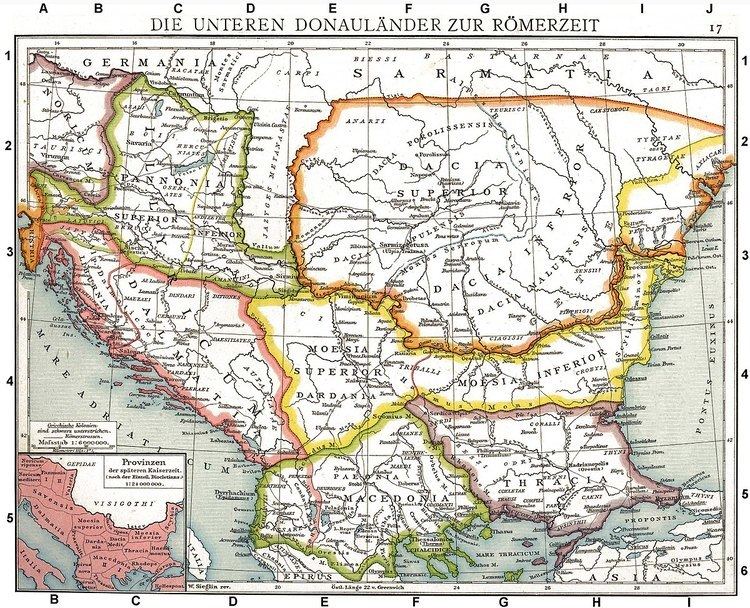 | ||
The Illyriciani or Illyrian emperors were a group of Roman emperors during the Crisis of the Third Century who hailed from the region of Illyricum (the modern western Balkans), and were raised chiefly from the ranks of the Roman army (whence they are ranked among the so-called "barracks emperors"). In the 2nd and 3rd centuries, the Illyricum and the other Danubian provinces (Raetia, Pannonia, Moesia) held the largest concentration of Roman forces (12 legions, up to a third of the total army), and were a major recruiting ground. The advance of these low-born provincials was facilitated by a major shift in imperial policy from the time of Gallienus (260–268) on, when higher military appointments ceased to be exclusively filled by senators. Instead, professional soldiers of humble origin who had risen through the ranks to the post of primus pilus (which also entailed admission to the equestrian order) were placed as heads of the legions and filled the army's command structure.
The historical period of the Illyrian emperors proper begins with Claudius Gothicus in 268 and ends in 284 with the rise of Diocletian and the institution of the Tetrarchy. This rather short period was very important in the history of the Empire, since it represents the recovery from the Crisis of the Third Century, a long period of usurpations and military difficulties. All of the Illyrian emperors were trained and able soldiers, and they recovered some of the provinces and positions lost by their predecessors, including Gaul and the eastern provinces. Men of Illyrian or Thraco-Dacian origin however continued to be prominent in the Empire throughout the 4th century and beyond.
List
The Illyriciani emperors' list is the following:
See also Concise List of Roman Emperors for more details.
